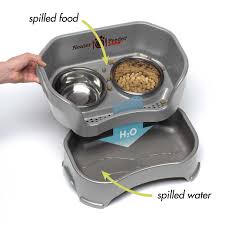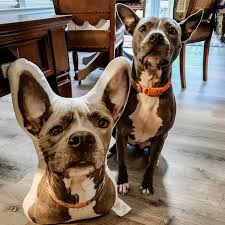Dog Nail Bed Infection Home Treatment
A dog’s nail bed infection can be a painful and uncomfortable experience for your furry friend. If you suspect that your dog has a nail bed infection, it’s essential to seek veterinary care for proper diagnosis and treatment. However, there are some home remedies that can help alleviate the symptoms and promote healing.
Soak the Paw
Prepare a warm water soak for your dog’s paw to help reduce inflammation and discomfort. Add a mild antiseptic solution like diluted povidone-iodine to the water for added antibacterial properties.
Keep the Paw Clean
Gently clean the infected nail bed area with a soft cloth soaked in an antiseptic solution. Be gentle to avoid causing further discomfort to your dog.
Apply a Warm Compress
You can apply a warm compress to the affected paw to help increase blood flow and promote healing. Make sure the compress is not too hot to prevent burns.
Use Epsom Salt Soaks
Epsom salt has natural antibacterial properties and can help soothe the infected nail bed. Prepare an Epsom salt soak by dissolving Epsom salt in warm water and soaking your dog’s paw for several minutes.
Monitor for Improvement
Keep a close eye on your dog’s nail bed infection and monitor for any signs of improvement or worsening symptoms. If there is no improvement or if the infection worsens, consult your veterinarian immediately.
Remember, while these home remedies can provide temporary relief, they are not substitutes for professional veterinary care. Always consult with your veterinarian before trying any home treatments for your dog’s nail bed infection.
8 Essential Tips for Treating Your Dog’s Nail Bed Infection at Home
- Keep the affected nail clean and dry.
- Soak the paw in a mixture of warm water and Epsom salt to help reduce inflammation.
- Apply a small amount of antibiotic ointment to the infected area.
- Use a cone or protective boot to prevent licking or chewing on the paw.
- Trim any overgrown nails carefully to prevent further injury or infection.
- Consult with a veterinarian for proper diagnosis and treatment recommendations.
- Ensure your dog has a balanced diet and stays hydrated for overall health and immune system support.
- Monitor the nail bed infection closely for any signs of improvement or worsening.
Keep the affected nail clean and dry.
To effectively address a dog’s nail bed infection at home, it is crucial to keep the affected nail clean and dry. By ensuring the area remains free from moisture and dirt, you can help prevent further irritation and promote healing. Regularly inspecting the nail bed for any signs of discharge or inflammation and gently cleaning it with an antiseptic solution can aid in maintaining proper hygiene. Remember, a clean and dry environment around the affected nail is essential for supporting your dog’s recovery from a nail bed infection.
Soak the paw in a mixture of warm water and Epsom salt to help reduce inflammation.
Soaking your dog’s paw in a mixture of warm water and Epsom salt can be a beneficial home treatment for reducing inflammation associated with a nail bed infection. The warm water helps to soothe the affected area, while the Epsom salt’s natural properties can aid in reducing swelling and promoting healing. This simple remedy can provide comfort to your furry friend and support the recovery process of the infected nail bed.
Apply a small amount of antibiotic ointment to the infected area.
To aid in the healing process of a dog’s nail bed infection, applying a small amount of antibiotic ointment to the infected area can help prevent further bacterial growth and promote recovery. The ointment can create a protective barrier, reducing the risk of secondary infections and providing relief to the affected nail bed. However, it is crucial to consult with a veterinarian before using any antibiotic ointment on your dog’s infection to ensure it is safe and appropriate for their specific condition.
Use a cone or protective boot to prevent licking or chewing on the paw.
To prevent further irritation and potential infection of the dog’s nail bed, it is advisable to use a cone or protective boot to deter licking or chewing on the affected paw. By restricting access to the paw, you can help promote healing and minimize the risk of introducing harmful bacteria to the area. This simple measure can aid in ensuring that the home treatment efforts are not compromised by your dog’s natural instinct to groom or nibble at the site of discomfort.
Trim any overgrown nails carefully to prevent further injury or infection.
Trimming any overgrown nails carefully is crucial in preventing further injury or infection in your dog’s nail bed. Long nails can put pressure on the nail bed, leading to discomfort and potential infections. By keeping your dog’s nails at an appropriate length through regular trimming, you can help maintain their paw health and reduce the risk of complications. Be sure to use proper nail trimming tools and techniques to avoid cutting the quick and causing pain to your furry friend. Regular nail maintenance is an essential part of caring for your dog’s overall well-being.
Consult with a veterinarian for proper diagnosis and treatment recommendations.
It is crucial to consult with a veterinarian for proper diagnosis and treatment recommendations when dealing with a dog nail bed infection. Veterinarians have the expertise to accurately diagnose the infection and recommend the most effective treatment plan for your furry companion. Seeking professional guidance ensures that your dog receives the appropriate care to address the nail bed infection promptly and prevent any potential complications.
Ensure your dog has a balanced diet and stays hydrated for overall health and immune system support.
Ensuring your dog maintains a balanced diet and stays well-hydrated is crucial for their overall health and immune system support, especially when dealing with a nail bed infection. A nutritious diet rich in essential nutrients helps strengthen your dog’s immune system, enabling their body to fight off infections more effectively. Adequate hydration is also vital for promoting healing and maintaining optimal health. By prioritizing your dog’s diet and hydration, you can provide them with the necessary support to recover from a nail bed infection and prevent future health issues.
Monitor the nail bed infection closely for any signs of improvement or worsening.
It is crucial to closely monitor your dog’s nail bed infection for any signs of improvement or worsening. By observing the affected area regularly, you can track the progress of the infection and determine if the home treatment methods are effective. Look out for changes in swelling, redness, discharge, or your dog’s behavior. If you notice any worsening symptoms or lack of improvement, it is essential to seek professional veterinary care promptly to ensure proper treatment and a speedy recovery for your furry companion.



